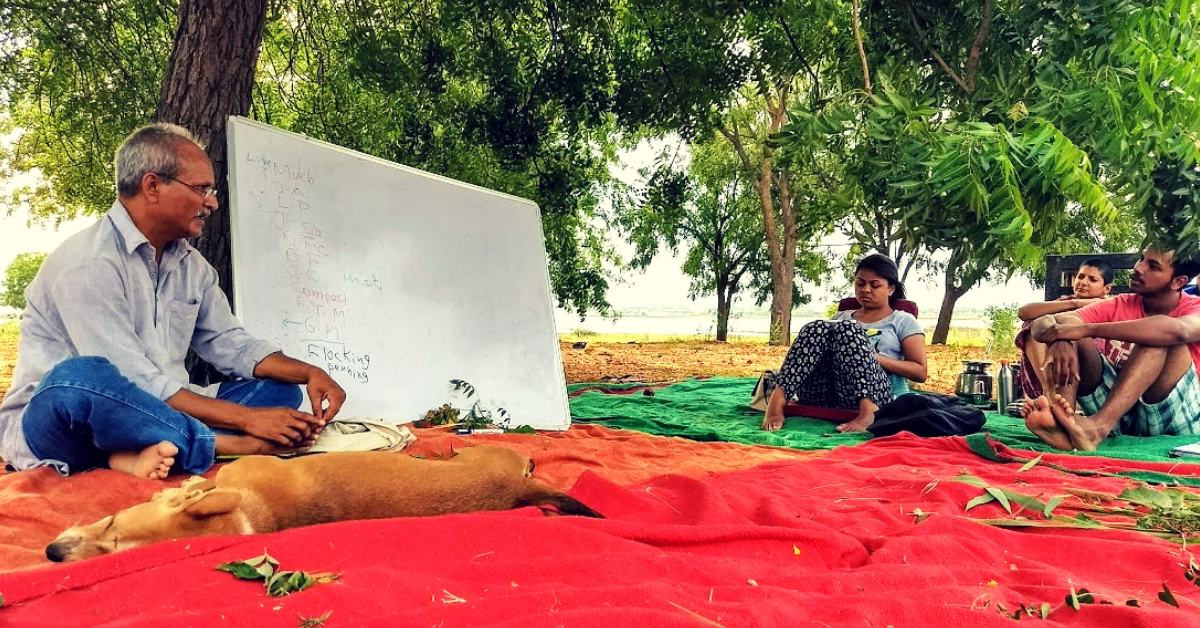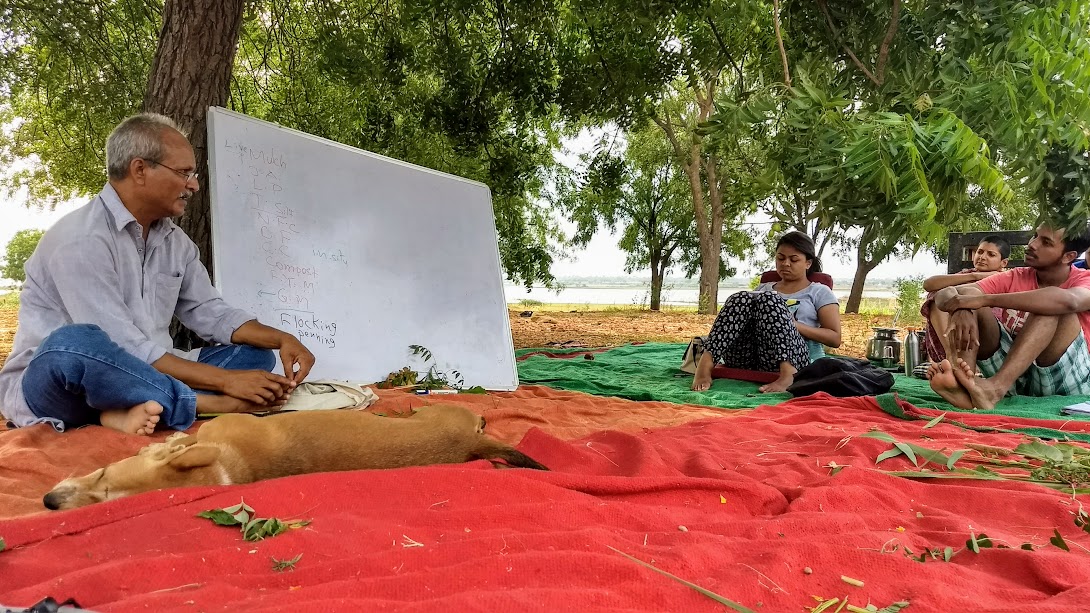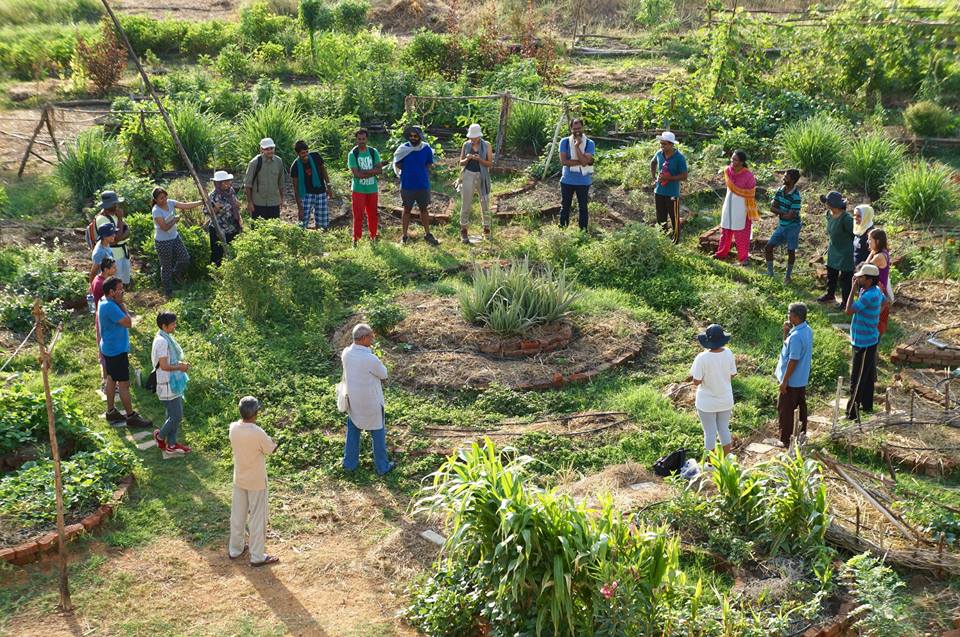Telangana Couple Uses Permaculture to Turn Barren Land Into a Thriving Food Forest!
Permaculture could be the alternate way of living and growing that can be a possible game changer in our race towards a better future.

At a time when our meals consist of more chemicals than nutrients and our natural resources are fast depleting, I was fortunate to have stumbled upon an alternative way of living/ growing that could be a game-changer, namely, Permaculture.
While reading about feasible means to sustainable living, I chanced upon the Facebook page of Aranya Agricultural Alternatives. Here, the page spoke of something called ‘Permaculture’ and offered a 12-day Design Course (residential) in it.
Sometimes, impulse and curiosity make for a good match — I attended a brief talk about seed preservation and exchange that was conducted by the volunteers of Aranya and signed right up for the Permaculture Design Course (PDC).

The term ‘Permaculture’ was coined by Bill Mollison in 1978. The word is a contraction of permanent agriculture and also of permanent culture. The aim of Permaculture is to create systems that are ecologically sound, economically viable and self-sustaining. It is applicable in both rural and urban contexts and at any scale.
There are several definitions by several masters, but the premise of Permaculture is based on observation of natural systems, the wisdom found in traditional farming practices, entwined with modern technological and scientific know-how to create a conscious design and a cultivated ecology.
The PDC was conducted (mostly) by Narsanna Koppula, a pioneer of Permaculture in India.
New experiences, changed mindsets:

Narsanna believes the forest is the future and he spreads his message through his non-profit organization “Aranya Agricultural Alternatives”, presently operating in the rural and tribal areas of Telangana and Andhra Pradesh.
As someone with little to no idea about Permaculture, I was not sure what to expect out of the course. For the most part, I believed, it was going to be about sowing and planting practices. It was an eye-opener to know that Permaculture is like a multidisciplinary toolbox that includes agriculture, water harvesting, renewable energy, natural building, agroforestry, waste management, animal systems, appropriate technology, economics and community development.
The first part of PDC was conducted at Polam Farm near the Singur Reservoir, Andole village, Telangana.
Polam was barren land till about two years ago. Today, this 96 acre young farm is a bustling cesspool of activity and life. In 2015, Supriya and Anil Gaddam started developing the farm with the aim to make it a regenerative, eco-friendly and sustainable place. The impetus for the change happened after Supriya did her Permaculture Design Course as well.
Polam Farm is also the chosen venue for the upcoming (and first-ever in India) International Permaculture Convergence (November 27 to December 2, 2017).

Our day began early with morning walks that evolved into can-you-guess-what-that-seed/tree/plant-is sessions. Indigenous plants, nitrogen-fixing plants, medicinal herbs etc. were patiently pointed out to us. We learnt about soil and micro-systems, about wind breaks and live boundaries, about how fire could destroy and ground water be replenished. We learnt to observe… the number one rule of Permaculture.
Throughout our course, we were often reminded about how we humans are not superior to other life forms. In his book The one straw revolution, Japanese farmer and philosopher Masanobu Fukuoka stated that Permaculture is a philosophy of working with, rather than against nature.
Thus, Permaculture is based on the three ethics of –
Earth care – ensuring a healthy balance for all life systems to continue and multiply
People care – provision for people to access all necessary resources
Fair share – a means to provide for the first two principles
Our lecture sessions were interspersed with practicals. We dug trenches and percolation tanks, we planned for sectors and zones, we designed farms, and we planted several saplings. Sometimes, we did the same stuff several times over, until some of us started mumbling botanical names in our sleep. Pongamia pinnata is forever etched in my memory.
The second part of the course was conducted at Aranya Farms, Zaheerabad.
This farm is an oasis of green and an excellent example of rain-fed agriculture in the dry lands.
Aranya is the perfect location to learn about Indian Permaculture, water harvesting, plant identification and uses. It is a warm, welcoming, constantly evolving place with one motto: (almost) everything should come from the system and remain as long as possible within the system.
We were lucky to be there during sowing season and saw firsthand the ploughing and sowing of millets and green grams using traditional methods.

We learnt from a local medicine woman about the healing powers of different herbs and plants. We had sessions on water harvesting, mapping and urban gardening. We learnt about pollinators and their benefits and what to look for while buying a piece of land. We were taught about the importance of seed exchange and preservation. We visited local farms and saw how Permaculture could change their lives, and we had Permaculture change our lives even as we were learning about it.
Narsanna always told us, “label is not important, work is important. If you cannot work in a farm, find a way to become the bridge between a farmer and the end consumer. If you cannot do that, reduce your energy usage, plant a kitchen garden, spread awareness. Small changes will combine to form a system that will become self regulatory, self sustaining.”
I am doing just that by trying to make as many people familiar with the word ‘Permaculture’.
Learn about Permaculture:
Aranya Agricultural Alternatives conducts Introduction to Permaculture and Permaculture Design Courses throughout the year.
Find details about the International Permaculture Convergence here.
Like this story? Or have something to share?
Write to us: [email protected]
Connect with us on Facebook and Twitter.
NEW: Click here to get positive news on WhatsApp!
This story made me
- 97
- 121
- 89
- 167
Tell Us More
We bring stories straight from the heart of India, to inspire millions and create a wave of impact. Our positive movement is growing bigger everyday, and we would love for you to join it.
Please contribute whatever you can, every little penny helps our team in bringing you more stories that support dreams and spread hope.



















